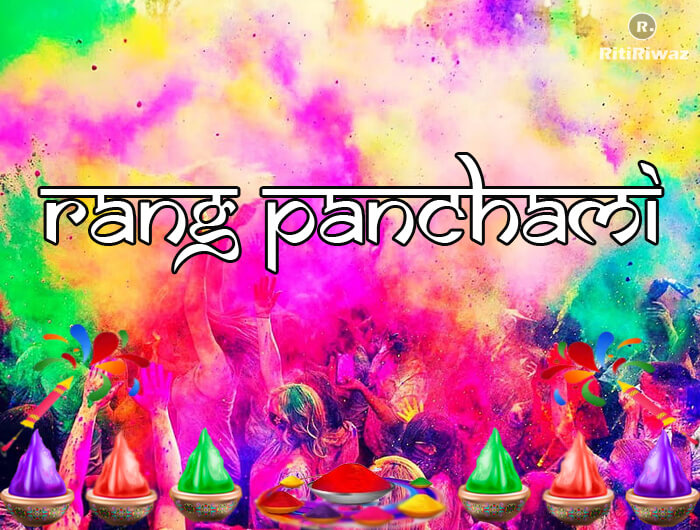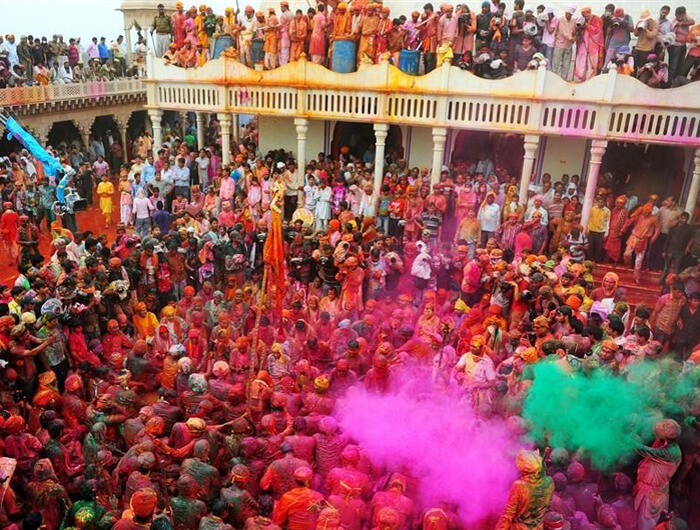Rang Panchami 2025

Rang Panchami falls on the Panchami Tithi of Phalguna, Krishna Paksha (as per the Amavasyant calendar) or Panchami Tithi, Chaitra, Krishna Paksha (as per the Purnimant calendar). Rang Panchami is considered to be the end of Holi festival. Flying colors destroy the negative energies in a person and positive qualities enter. God also blesses his devotees through the colors in the sky.
In 2025 Rang Panchami will be celebrated on Wednesday, 19th March.
The festival literally means Rang that means color and Panchami means fifth day. So it is celebrated five days after Holi festival in similar manner as Holi by throwing colors and splashing water of each other. In North India, the festivities of colors (Holi) start from Phulera dooj , which continues till Rang panchami.
This festival is celebrated in every part of the country, mainly in North Indian states of Uttar Pradesh, Madhya Pradesh, Bihar, and Maharashtra. In Vrindavan and Mathura this festival is celebrated as the culmination of Holi.
Rituals during Rang Panchami
The festival is celebrated similarly as Holi by throwing fragrant powder (gulal) and splashing colored water on others. Procession are taken out on the festival of Rang Panchami and water mixed with color and fragrance are sprinkled on each other.

Krishna and Radha are worshipped on this day puja are performed in temples to pay homage to the divine union between Krishna and Radha. Since Lord Krishna and Radha are the epitome of love and their worship on this day will maintain love among the devotees and their families.

In Maharashtra’s the festival of Rang Panchami is very popular among fisherman. It is called as Shimga or Shimgo in Maharashtra when people perform Palkhi dance. Here the festival is celebrated with singing and dancing and making merry. There are also Dahi Handi programs organized where women throw colors and water to distract them from breaking the pot. Making sound through their mouth in a peculiar fashion is also done with the back of their hands. Their special dance moves and sound making with mouth is a means to release all their feelings, needs and desires.
People enjoy this day with colors, eating sweets, enjoying bhang and meeting relatives and friends dancing to their regional songs.
Significance of Rang Panchami
The festival of Rang Panchami is of highly religious significance for Hindus. On Holika Dahan a huge fire is lit and the puja done before Holi purifies all the rajasic and tamasic particles of the atmosphere. This festival of Rang Panchami is seen as victory over evil and is celebrated with enthusiasm, it bliss of purification. It is actually made so as to reduce the aura of the Rajas and Tamas. The bliss of the colors is actually believed to attract the five elements of nature which actually attracts the deities. Goddess Lakshmi is also worshiped in many places on this day.
This day of Rang Panchami is dedicated to the deities it is also called as Dev Panchmi. On this day, it is also believed that flying gulal destroys negative energy in a person and positive qualities enter. God also blesses his devotees through the colors in the sky. It is believed that playing colors on this day pleases the five deities and blesses them with happiness, prosperity and splendor.
According to Hindu mythology, the festival of Rang Panchami marks the victory and victory of Sattvaguna (purity) over the Tamasic and Rajasic qualities. It signifies that the obstacles in the path of spiritual growth will be over soon. The Rang Panchami festival helps to activate the five key elements. These five major elements include air, sky, earth, water and light. According to the Puranas, the human body is also made up of these five elements. The festival of Ranga Panchami invokes these five basic elements that help to restore balance in life.
